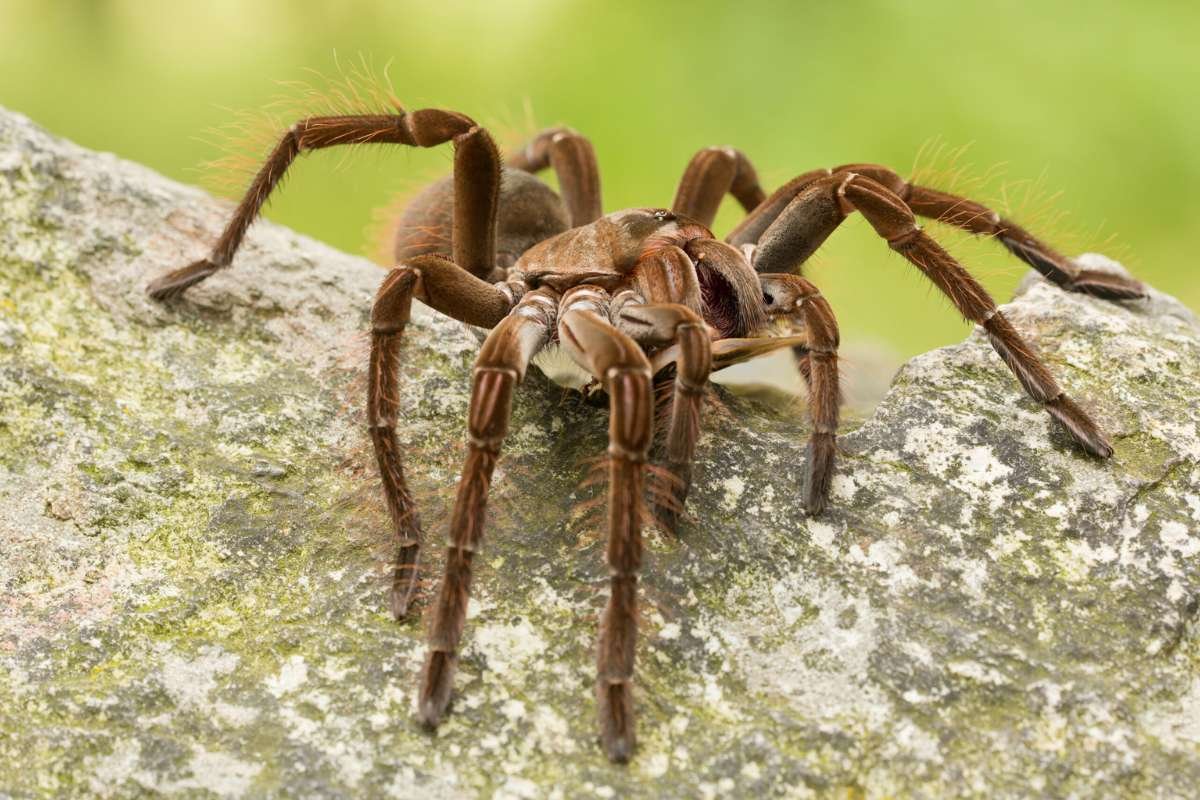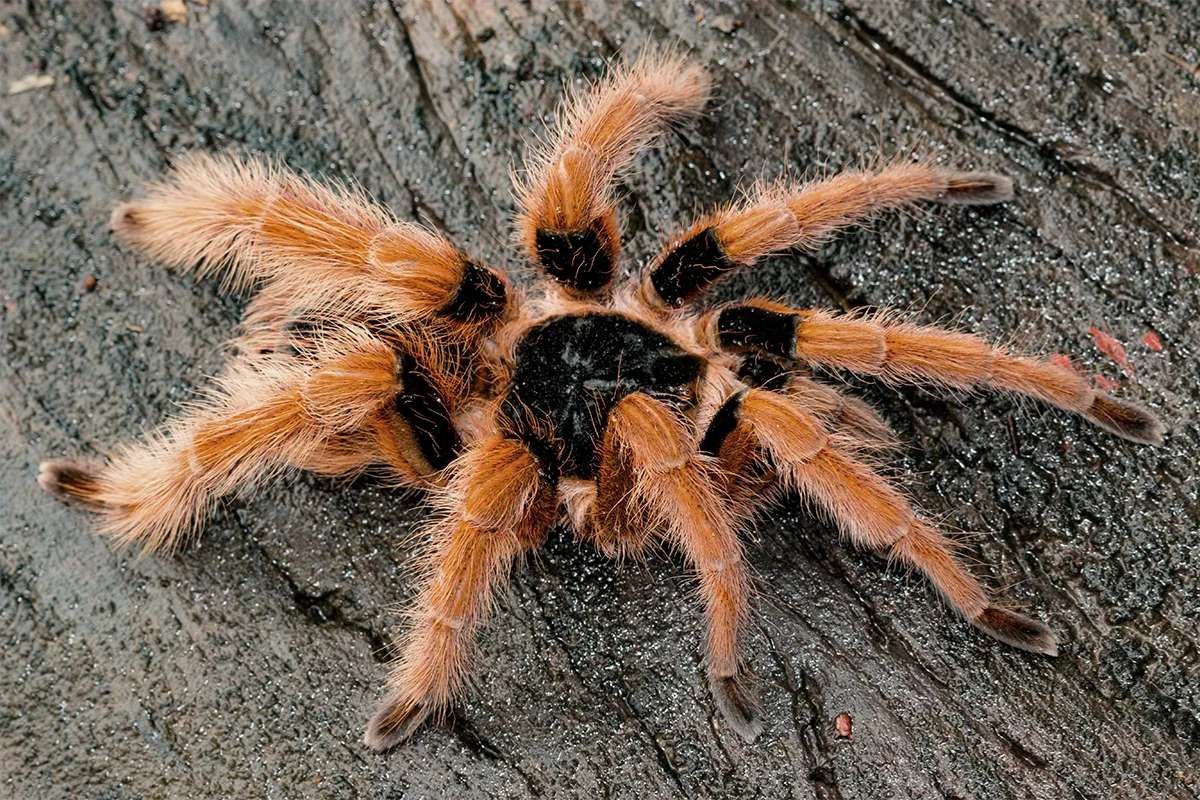Most people think of spiders as small and harmless, quietly making webs in the corners of rooms. But not all spiders are that tiny. Some are huge, hairy, and can even catch birds or small animals. The Biggest Spiders in the World are both amazing and scary, especially for those afraid of spiders.
In this article, we will look at the biggest spiders by size and leg length, learn where they live, and find out how they survive in nature.
What Makes a Spider “Big”?
When ranking spiders by size, two factors are considered: body length and leg span. Some spiders may have thick, bulky bodies but shorter legs, while others may appear massive due to long, stretched-out limbs.
Scientists typically use leg span as the main measurement. The following giants have all made it to the list of the Biggest Spiders in the World thanks to their record-breaking dimensions.
1. Goliath Birdeater (Theraphosa blondi)

The Goliath Birdeater is widely considered the largest spider by mass and body length. Native to the rainforests of northern South America, this tarantula species can weigh over 170 grams and reach a leg span of up to 12 inches (30 cm).
Despite its name, the Goliath Birdeater rarely eats birds. It mostly feeds on insects, small rodents, frogs, and worms. This spider uses its fangs to inject venom, which paralyzes the prey and liquefies it for easy consumption.
Goliath Birdeaters also possess “urticating hairs” on their abdomen, which they release when threatened. These hairs can irritate the skin and eyes, making them an effective defense mechanism against predators.
2. Giant Huntsman Spider (Heteropoda maxima)
Holding the record for the largest leg span, the Giant Huntsman Spider can stretch up to 12 inches, making it a serious contender among the Biggest Spiders in the World. Discovered in a cave in Laos in 2001, this spider is part of the huntsman family, known for its speed and hunting ability.
Unlike web-weaving spiders, huntsman spiders actively chase down their prey. Their long, crab-like legs allow them to move swiftly across the forest floor, tree trunks, and even inside homes in tropical regions.
Although terrifying in appearance, the Giant Huntsman is not deadly to humans. Its bite might cause pain and swelling, but it’s not considered medically significant.
3. Brazilian Salmon Pink Birdeater (Lasiodora parahybana)

Another massive tarantula from South America, the Brazilian Salmon Pink Birdeater, can have a leg span of up to 10 inches. It’s the third-largest tarantula species and gets its name from the light pink hairs that cover its legs.
These spiders are ground dwellers and are popular in the exotic pet trade due to their impressive size and manageable temperament. Like other large tarantulas, they rely on ambush tactics, pouncing on their prey and injecting venom to subdue it.
Though intimidating, they are not aggressive unless provoked. They are nocturnal and spend most of their time hidden in burrows or under leaves.
4. Hercules Baboon Spider (Hysterocrates Hercules)
The Hercules Baboon Spider is shrouded in mystery. Known from only one specimen collected over 100 years ago, this rare species from Africa is believed to be one of the Biggest Spiders in the World. Its name comes from the resemblance of its legs to a baboon’s fingers and its great size.
Because no living specimens have been recently observed, little is known about its behavior, diet, or exact size. Some estimates suggest a leg span close to 9 inches. Conservationists are still hoping to rediscover this elusive spider in the wild.
5. Colombian Giant Redleg (Megaphobema robustum)
With its striking red-orange legs and thick body, the Colombian Giant Redleg is another impressive tarantula that deserves a spot on the list. It can grow up to 8-9 inches in leg span and is native to the rainforests of Colombia and Brazil.
Unlike some aggressive species, the Colombian Giant Redleg is more defensive than offensive. When threatened, it performs a “threat posture” by lifting its front legs and showing its fangs. It may also spin in circles to confuse predators, a strange but effective trick.
Read Also: Meet the Spiders That Could End Your Life in Minutes
Where Do the Biggest Spiders in the World Live?
Most of these giant spiders are found in tropical rainforests, warm caves, and humid habitats. South America, particularly Brazil and Venezuela, is home to several massive tarantula species. Southeast Asia, especially Laos and surrounding regions, is known for the huntsman family, while parts of Africa have their legendary giants, like the baboon spiders.
These spiders play an important role in controlling insect populations and maintaining ecological balance. Despite their frightening size, they are more scared of humans than we are of them.
Are Big Spiders Dangerous?

While the Biggest Spiders in the World may look threatening, most are not dangerous to humans. Their venom is meant to subdue small prey, not kill large animals. In most cases, a bite from one of these giants causes mild symptoms like swelling, itching, or pain, similar to a bee sting.
However, people with allergies or sensitivities should still avoid handling large spiders without caution. The real danger comes from panic, not the spider itself. In the wild, these spiders prefer to flee rather than fight.
Fascination vs. Fear:
Spiders, especially the giant ones, stir deep fears in many people. Yet, they are fascinating creatures. The Biggest Spiders in the World have evolved to become powerful hunters, skilled survivors, and important parts of their environments. They show that not all spiders fit the small, quiet stereotype.
In many cultures, large spiders are symbols of mystery, patience, and power. Some even consider them lucky. And for scientists, these spiders offer insights into evolution, predator-prey dynamics, and adaptation.
Conclusion
The Biggest Spiders in the World are more than just creepy crawlies, they are amazing examples of nature’s diversity. From the dense jungles of South America to the caves of Southeast Asia, these spiders have carved out unique niches in the wild.
Whether you are a nature lover or someone who wants to face their fears, learning about these massive arachnids can give you a whole new perspective. After all, the more we understand the natural world, even its scariest parts, the less we fear it.







